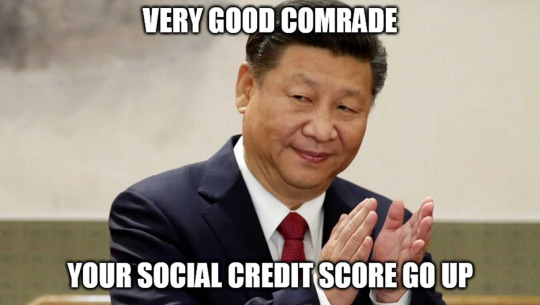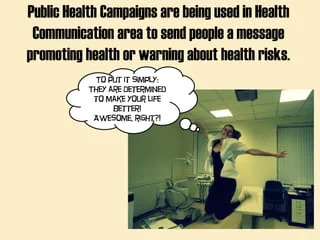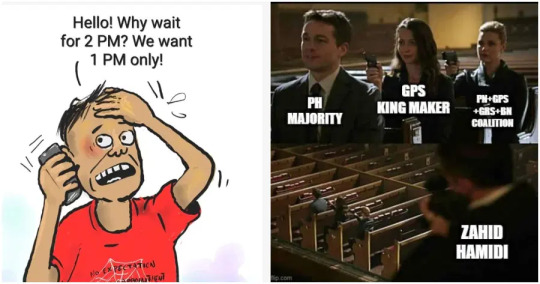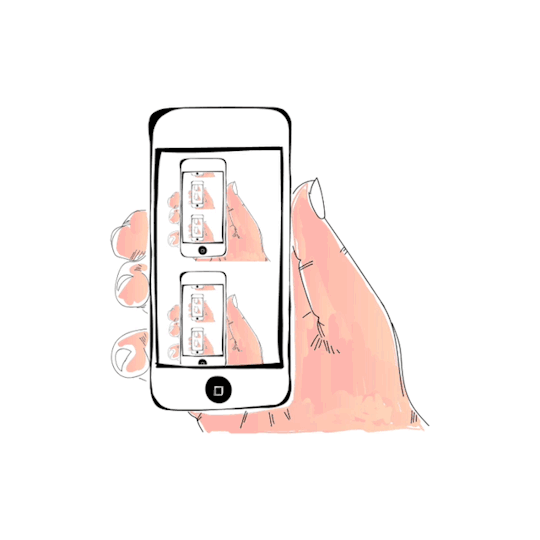For academic purposeses only, no copyright intended. Please dont sue me, I am a Brokie #1 Kopi O #2 Kopi C #3 Cola Zero
Don't wanna be here? Send us removal request.
Text
Is the Social Credit System a way to instill good behavior and provide safety to citizens? At what cost?
The introduction of the Social Credit System represents a significant change in management, with the objective of shaping societal behavior and ensuring citizen safety through an elaborate system of observation and evaluation. Designed with the aim of promoting good conduct and reducing possible hazards, this system generates important concerns regarding its efficiency in accomplishing these goals. The Social Credit System (SCS) of China has garnered significant scientific and public interest due to its comprehensive attempt to incorporate traditional commercial credit ratings with social behavior (Meissner, cited in liang 2018). The Chinese government seeks to examine the "creditworthiness" and "trustworthiness" of individuals and organizations by assigning them a computational score based on their past and current social and economic activities. These credit scores will determine whether the participant is eligible for incentives or penalties (Liang 2018). Does the social credit system provide an effective method for promoting good conduct and maintaining security while protecting privacy and freedom of its citizens, and does it achieve this without incurring any costs?

The Social Credit System (SCS) has numerous potential advantages. Through the introduction of incentive for beneficial activities and the promotion of a collective feeling of responsibility, the system has the ability to improve social behavior. According to Gaedke (2021), advantages involve reduced electricity expenses, availability to prestigious universities and advanced education, easier access to public housing, complimentary gym membership, and an increased chance of getting a loan. Participating in a certain amount of positive acts inside the Social Credit System framework not only provides incentives but also serves as a compelling motivation for individuals to make excellent contributions to their community. Moreover, its function in detecting possible dangers and decreasing criminal behavior through increased monitoring shows potential for improving public safety. According to Alguliyev (2021), The Chinese government claims that, despite the challenges, the SCS has a significant role in minimizing risks in the economic domain and may serve as a crucial tool in guaranteeing and preserving public safety.Citizens in all nations desire a society that is both stable and secure. The SCS promotes the establishment of a model legal system in the country, with extensive oversight over the actions of citizens, government entities, and various corporations. But it's important to look at these possible benefits in the context of the bigger issues and effects that come with having such a thorough system for keeping an eye on society.

With the benefits the SCS brings, there are significant risks and costs linked to the implementation of the Social Credit System. Amidst the potential advantages, there are significant risks and costs linked to the implementation of the Social Credit System. One notable primary concern is the invasion of privacy due to the system's heavy surveillance and data gathering, which raises concerns about protecting individuals' personal information and privacy .According to Alguliyev (2021), one of the law problems with the SCS is that it neglects individuals' privacy and submitting their socio-economic status to information systems goes against political guidelines and the concepts of "personal data security". Additionally, constantly keeping an eye on people's daily lives could mean that their private lives are invaded, which could affect their freedom. There are multiple instances where the Social Credit System tries to introduce a new policy with positive intentions, but local governments implement the policy in various twisted ways to serve their own goals (Liang 2018). As a result, social credit programs have the potential to limit individual rights, such as freedom of speech. These problems highlight the requirement for a detailed examination of the balance between the advantages of the system and the protection of basic individual rights.

The implementation of the Social Credit System provokes a wide variety of reactions from the public, ranging from acceptance to open hatred. The influence of public perception plays a crucial role in defining the discussion surrounding this surveillance mechanism. However, Chinese individuals may face challenges when expressing disagreement towards specific policies, numerous instances exist where both the central and local government have reconsidered or overturned decisions in response to widespread public protests (Creemers 2018). The criticism towards the SCS serves as a means for expressing concerns, resulting in a dynamic engagement between the government's objectives and the rights and aspirations of the people. According to Gaedke (2021), critics of the system, especially those in western media, have compared it to a dystopian feature of a science fiction film.

In conclusion, the Social Credit System includes a complicated web of possible advantages and significant disadvantages, raising crucial inquiries regarding the complex balance between community wellbeing and personal rights. Studies have demonstrated that although social credit settlement is intended to safeguard a nation's economic welfare and security, it can compromise citizens' rights, impact their livelihoods, and give rise to data security concerns( Alguliyev 2021). The Social Credit System requires a reconsideration of trust, limitations on personal freedom, and the moral values that should guide our pursuit of an unbiased and equal social framework.
References:
Liang, F., Das, V., Kostyuk, N. and Hussain, M.M 2018, ‘Constructing a data‐driven society: China's social credit system as a state surveillance infrastructure’, Policy & Internet, vol .10 no.4, pp415-453, viewed 23 November 2023, <https://doi.org/10.1002/poi3.183>.
Gaedke, M 2021, ‘Social Credit System Pros and Cons – A Look at China’s System | Daily Infographic. [online] Daily Infographic | Learn Something New Every Day. Available at: <https://dailyinfographic.com/social-credit-system-pros-and-cons-a-look-at-chinas-system>.
Alguliyev, R.M. and Alakbarova, I.Y 2021, ‘Social credit system as a new tool in the management of citizens' behavior: problems and prospects’, International Journal of Education and Management Engineering (IJEME), vol. 11 no. 5, p.1, viewed 23 November 2023, <https://doi.org/ 10.5815/ijeme.2021.05.01>.
Creemers, R 2018, ‘China's Social Credit System: an evolving practice of control’, viewed 23 November 2023, <http://dx.doi.org/10.2139/ssrn.3175792>.
2 notes
·
View notes
Text
Has the Covid-19 pandemic changed the public perception of gaming?
The Covid-19 pandemic, an unparalleled worldwide emergency, has had a lasting impact on societies around the globe, fundamentally changing not just our methods of work, socializing with others, education and much more. But one area that was affected was digital entertainment, as researchers have found that people spent more time in front of screens and used digital leisure more during the pandemic. This was especially true for online gaming and related activities like video game streaming (Claesdotter-Knutsson et al. 2022). People who typically frequent cyber cafes, arcades, or engage in outdoor activities were constrained by the enforced lockdown. Consequently, to combat boredom, individuals turned to digital media, with a significant number of teenagers leaning towards video games. The Covid-19 pandemic has dramatically changed the way people view gaming, transforming it into an essential means of connecting with others, finding enjoyment, and relieving stress. People's perspectives on video gaming have been drastically shifted because of the worldwide spread of the COVID-19 epidemic, which has made gaming a crucial means of connecting with others, finding happiness, and reducing stress.

Despite the strict measures implemented to control the spread of the virus, there was a major shift in the social dynamics of gaming. According to Laato et al. (2020), the ongoing struggle amongst game creators to encourage individuals to remain at home. Several additional creators and publishers of multiplayer and single player games organized exclusive events, rewards, and promotions for players during the pandemic, aiming to encourage them to stay indoors. The online worlds of popular games have evolved beyond basic forms of amusement, serving as vital platforms for sustaining social connections. Because of their potential to bring individuals together in a shared virtual world, they have developed into a valuable tool for communication and collaborative activities. This has resulted in enhanced efficiency and team efficiency, as well as reduced costs and an environmental footprint (Javaid et al., cited in López-Cabarcos et al. 2020). According to King (cited in Claesdotter-Knutsson 2022), Steam, which is the leading digital distribution platform for video games, recorded a record-breaking 20 million active users in 2020. In my own experience, there was a game called “Among us” that emerged during the pandemic, and it was a one hit wonder, players worldwide liked its manipulative game mechanics and appealing social interactions.

Before the pandemic, the changing points of view of gaming during the epidemic also challenged existing biases connected to the gaming community. Previously, gamers were frequently stereotyped as isolated beings, disconnected from reality. However, as gaming gained widespread popularity as a sociable and recreational activity during lockdowns, these views started to dissolve. According to Claesdotter-Knutsson et al. (2022), the World Health Organization (WHO) has supported gaming as a means to encourage social distancing and reduce feelings of loneliness. This support is visible through the gaming industry's media campaign, #PlayApartTogether, which combines COVID-19 prevention guidelines with messages promoting online gaming. With the shifting perception of video games being an isolated activity, they are Streaming platforms, which allow viewers to see video gameplay in real-time, have become important in recent times. The changing idea of video gaming as an isolated activity has been particularly noticeable during the pandemic, especially with the increasing popularity of streaming platforms. These services, which let spectators observe gameplay as it happens, have grown in importance, compromising the traditional idea of gaming as an isolated activity. Therefore, sports companies are attempting to incorporate streaming into their digital marketing strategies to impact consumers' decisions to purchase their products (Pearson, cited in López-Cabarcos et al. 2020).

As people get used to the changing world of video games, a very important question comes up about how these changes will affect people after the pandemic is over? Although the acknowledgment of gaming's social, recreational, and educational aspects has increased significantly, it is unclear whether these changes will continue or if they were only temporary reactions to the unique circumstances of the pandemic. According to López-Cabarcos et al. (2020), The gaming and eSports sector has shown adaptability and continued growth, even within the COVID-19 pandemic. Gaining a thorough understanding of the operation of this sector is essential, as all signs point to significant changes happening soon. Predicting these changes is reasonable, regardless of the development of the pandemic.

In conclusion, the Covid-19 pandemic has unquestionably changed the way the general population views gaming, shifting it from a formerly mocked recreational activity to a fundamental component of everyday lifestyle. According to Niilsson et al. (2022), Gaming and social media consumption are generally popular recreational activities among people of all ages, particularly teens, and there is a significant risk of developing problematic behaviors associated with these activities. Hence, it is advisable to acknowledge the symptoms and carefully monitor individuals in order to support them in identifying and applying adequate coping methods to tackle the challenges coming from the COVID-19 epidemic.
References:
Nilsson, A., Rosendahl, I. and Jayaram-Lindström, N 2022,’Gaming and social media use among adolescents in the midst of the COVID-19 pandemic’, Nordic Studies on Alcohol and Drugs, vol. 39 no. 4, pp.347-361, viewed 20 December 2023, <https://doi.org/10.1177/14550725221074997>.
López-Cabarcos, M.Á., Ribeiro-Soriano, D. and Piñeiro-Chousa, J 2020, ‘All that glitters is not gold. The rise of gaming in the COVID-19 pandemic’, Journal of Innovation & Knowledge, vol.5 no. 4, pp.289-296, viewed 20 December 2023, <https://doi.org/10.1016/j.jik.2020.10.004>.
Laato, S., Laine, T.H. and Islam, A.N 2020, ‘Location-based games and the covid-19 pandemic: An analysis of responses from game developers and players’, Multimodal Technologies and Interaction, vol. 4 no. 2, p.29, viewed 20 December 2023, <https://doi.org/10.3390/mti4020029>.
Claesdotter-Knutsson, E., André, F. and Håkansson, A 2022, ‘Gaming activity and possible changes in gaming behavior among young people during the COVID-19 pandemic: cross-sectional online survey study’, JMIR Serious Games, vol. 10 no. 1, viewed 20 December 2023, <https://doi.org/10.2196/33059>.
1 note
·
View note
Text
What are the dangers of the reliance of social media for public health campaigns?
Given the popularity of social media, public health initiatives have progressively turned to digital channels to distribute information and influence health-related behaviors. The popularity of social media enables public health groups to quickly and cost-effectively enhance the exposure of their media campaigns and expand the reach of their conventional media messaging (Kostygina et al. 2020). Data obtained from these platforms provide both visual and textual information regarding audience perspectives and behavior. This data can be used to develop effective tactics for distributing messages about health promotion (Eichstaedt et al., cited in Kostygina et al. 2020) Although these platforms offer broad coverage and easy access, the increasing reliance on social media raises concerns regarding the spread of false information and unexpected consequences. Therefore, it is necessary to thoroughly analyze the potential risks associated with using social media for public health communication in the digital era.

When compared to traditional media like TV and newspapers, social media is much more flexible and dynamic, which encourages viewers to get involved. It offers immediacy, allowing for real time communication that helps with adaptability to emerging issues. According to Murdough (cited in Ashley & Tuten 2014), social marketing provides a larger area of points and options for engaging with viewers, hence enhancing the relationship between the two parties. Social networking systems specifically created for a certain set group of people like clinicians, patients, and the public can effectively utilize the combined knowledge of multiple individuals to improve public health surveillance (Kanchan & Gaidhane 2023). People who work in public health and health promotion are turning to social media in increasing numbers in order to offer projects, promote their resources and support, and support one another. By engaging in ongoing communication, public health officials observe trends and patterns in public health issues, spotting possible dangers, and quickly adapt to the community's changing needs. However, with the numerous benefits and hope it brings, the risks that come with it are much more evident.

When it comes to public health communication, social media has the power to change things because it has so much reach and impact. Given the spread of crucial health information via these platforms, it is apparent that they possess significant impact in influencing individuals' thinking and decision-making processes. Since the internet is open to everyone, anybody can post any sort of information or sensitive topics that they desire. According to Kanchan & Gaidhane (2023), this issue causes individuals to take the position of alleged experts and distributes incorrect information. Online information can display conflicting perspectives and change based on geographical and cultural factors. The increasing risk of misinformation has led to a rise in the spreading of conspiracy theories, instances of violence, and a harmful impact on religious and cultural sentiments, which are becoming more common. Furthermore, individuals' decisions regarding the disclosure of personal health information online are influenced by factors such as privacy concerns, trust, and the sensitivity of the material (Bansal et al., cited in Wang & Ba 2013). As it it's against the law to share someone's health information on these sites without thinking about their well-being or breaking their trust, thus being a breach of their privacy.

Considering the many problems that come up when public health efforts use social media, an essential approach involves improving fact-checking methods to maintain the precision and dependability of health information provided on digital channels (Kanchan & Gaidhane 2023). Additionally, encouraging partnerships between public health bodies and social media sites is an important part. These relationships are very important for setting moral standards, making sure that accurate health information gets around, and making public health communication more effective in the digital age. According to Chretien et al, cited in Kanchan & Gaidhane (2023), the American Medicalz Association released a policy statement in November 2010, advising doctors to exercise caution when using social networking platforms. This includes maintaining separate professional and personal profiles and ensuring the confidentiality of patient information. By addressing these strategic measures, it shows the importance of a coordinated and deliberate approach to address the issues that arise from the connections of public health campaigns and social media.

In conclusion, the substantial impact of these platforms has increased the spread of crucial health information, the risks of false information, unintended outcomes, and the possible worsening of mental well-being. With the increasing growth of social media usage among different population groups, now is an appropriate time for health promotion efforts to incorporate it into their broader strategic communications plan ( Ramanadhan 2013). It is crucial to maintain a balance between the substantial impact of social media and ethical responsibility, in order to build a healthier society. To improve public health, it is important to have a strong commitment to transparency, accuracy, and collaboration.

References:
Kostygina, G., Tran, H., Binns, S., Szczypka, G., Emery, S., Vallone, D., & Hair, E, 2020, ‘Boosting Health Campaign Reach and Engagement Through Use of Social Media Influencers and Memes’. Social Media + Society, vol. 6 no. 2, viewed 17 November 2023, < https://doi.org/10.1177/2056305120912475 >.
Ashley, C & Tuten, T 2015, ‘Creative strategies in social media marketing: An exploratory study of branded social content and consumer engagement’, Psychology & Marketing, vol. 32 no. 1, pp. 15–27, viewed 17 November 2023, <https://doi.org/10.1002/mar.20761>.
Ba, S. and Wang, L 2013, ‘Digital health communities: The effect of their motivation mechanisms’, Decision Support Systems, vol. 55 no. 4, pp.941-947, viewed 17 November 2023, <https://doi.org/10.1016/j.dss.2013.01.003>.
Kanchan, S. and Gaidhane, A 2023, ‘Social Media Role and Its Impact on Public Health: A Narrative Review’, Cureus, vol. 15 no.1, viewed 17 November 2023, <https://doi.org/10.7759/cureus.33737?>.
Ramanadhan, S., Mendez, S.R., Rao, M. & Viswanath, K 2013, ‘Social media use by community-based organizations conducting health promotion: a content analysis’, BMC public health, vol. 13 no. 1, pp.1-10, viewed 17 November 2023, <https://doi.org/10.1186/1471-2458-13-112
1 note
·
View note
Text
Malaysians engagement with politics on social media, yay or nah?
In the era of digitalization, the impact of social media on democracy and political engagement is unquestionable. The use of social media platforms is a significant advancement in communication technology that has the potential to improve various aspects of human behavior (Lee et al., cited in Abdullah et al. 2021). Citizens of a diverse nation actively engage in political conversation, share ideas, and build the narrative of the country's democratic path on digital platforms, which resonate with the beating heartbeat of the nation. According to Leong 2015, The Internet is widely acknowledged for its capacity to significantly augment democratic processes and practices by enabling easy access to extensive information. So, what are the impact that the dynamic interaction between social media and Malaysia's political scene on democracy?

Within the domain of Malaysian politics, social media serves as a dynamic space where many platforms influence and create political discussions. While the government still maintains strict control over opposing media, political activists now have a new platform to spread their message thanks to the Internet without having to worry as much about laws (Wok & Mohamed 2017). Individuals have the ability to establish separate political groups on the internet, publish and spread political matters via blogs, and share political videos on their social media platforms. According to Weiss (2012), the political effects of these types of media are shaped by the dynamic and interactive nature of these forms. Additionally, social media platforms like Facebook, Twitter, and instant messaging applications such as WhatsApp serve a vital role in providing information and enabling political engagement. According to Abdullah et al. (2021), it is discussed that the reasons and processes behind the use of online platforms for political information-seeking, which serve as a substitution for traditional offline methods of communication, such as talking with friends, asking questions, sharing beliefs or information, and engaging in practices related to political matters.

Political entities in Malaysia effectively utilize social media to reinvent normal campaigning and communication within the fast-changing digital world. An example would be in the 2008 general election, political group Barisan National had its leaders prioritized the creation of their online presence by utilizing websites, blogs, and social media platforms such as Twitter and Facebook to engage with young voters (Mohsin & Raha, cited in Leong 2015). Additionally, they established online e-government portals to facilitate public participation, feedback, and the delivery of services. Along with social media, it helps enable the spread of political messages and offers a direct means of communication, which surpasses traditional campaign techniques by providing immediacy. Social media plays a crucial role for politicians in shaping their public image and providing transparency to users by sharing information to the public, and the online presence of political leaders will demonstrate their interactions with voters, which is a crucial aspect in attracting voters (Hamid et al. 2018). The rise of social media has given politicians a powerful tool to effectively connect with and involve younger voters. Nevertheless, this ease of access also has dangers, since the platform's unrestricted nature exposes politicians to the possibility of intentional sabotage.

Although social media has a significant impact on making information accessible to everyone, it also presents a series of difficulties, most notably demonstrated by the quick spread of false or misleading information. In a rarer occurrence, a study found out that political parties were using cyber- warfare tactics during the general election in 2013, to discredit and derail their messages, reducing the impact and influence each party has in the election (Mill, cited in Leong 2015). Thus, imploding and increase of cyber troopers and social media users whose purpose was to counter any opposition media content. According to Leong (2015), the internet was filled with manipulation, overstatement, and misinterpretation of information for political purposes, thus infecting the competence and rationality of citizens. Thus far, the government has been actively trying to minimize the spread of false political content, or any information that could negatively impact the nation's reputation. According to Weiss (2012), a blogger was charged and had possible penalization when they were caught publishing false information on their blog.

In conclusion, the mutual beneficial relationship between Malaysians and social media has brought forth a major and significant shift in the political landscape of the nation. The connection between technology and politics, particularly shown by the active participation of citizens, has fundamentally changed the old models of political communication. It is argued that politicians and parties are transitioning from the conventional one-sided, hierarchical method of communication to a more interactive approach of communication (Leong 2015). In the era of digitalization, where knowledge is easily accessible, it is crucial for everyone, especially the younger people, to participate actively in political discussions. Participation in these discussions provides citizens with the information to affect the political landscapes that will impact the future direction of the nation.

References:
Abdullah, N.H., Hassan, I., Fazil Ahmad, M., Hassan, N.A. and Ismail, M.M 2021, ‘Social media, youths and political participation in Malaysia: A review of literature' International Journal of Academic Research in Business and Social Sciences, Forthcoming, viewed 15 November 2023, < http://dx.doi.org/10.2139/ssrn.3849948>.
Leong, P. P. Y 2015,’Political Communication in Malaysia: A study on the Use of New Media in Politics’, JeDEM - eJournal of eDemocracy and Open Government, 7(1), pp, 46–71, viewed 15 November 2023, < http://dx.doi.org/10.29379/jedem.v7i1.372>.
Wok, S. and Mohamed, S 2017,’Internet and social media in Malaysia: Development, challenges and potentials’ In The evolution of media communication, IntechOpen, viewed 15 November 2023, <http://dx.doi.org/10.5772/intechopen.68848>.
Weiss, M.L 2012, ‘Politics in cyberspace: New media in Malaysia. Berlin: Friedrich-Ebert-Stiftung', fesmedia Asia,viewed 15 November 2023, <https://library.fes.de/pdf-files/iez/09068.pdf>.
Hamid, Nur Nadhirah Ab, and Safawi Abdul Rahman 2018, ‘Impact of social media on Malaysia’s election landscape’, International Journal of Academic Research in Business and Social Sciences, vol. 8, no. 9 : 275-284, viewed 15 November 2023, <http://dx.doi.org/10.6007/IJARBSS/v8-i9/4590>.
2 notes
·
View notes
Text
Is blogging still relevant in the age of TikTok and Instagram?

In this current age of digital advancement, the way people consume and share information has surely changed due to the growth of social media platforms such as TikTok and Instagram, where sharing short form content with the audience is now simpler than ever, with visual content taking center stage over written content. So, that brings me to a question: is blogging still relevant nowadays? Let us go into topic as in “What is blogging?” Blogging or blogs are like online personal diaries that individuals share. You could discuss your daily activities or exchange information on this online journal. People then recognized it as chance to share information in a novel manner online (Minaev 2023). The many reasons for blogging could be ranging from personal use or for business purposes, as the main purpose of the blog is to connect yourself to your desired audience. Thus, the lovely world of blogging was born. Back to the main topic at hand, is blogging still relevant in this current age? According to Bosnjak (2023), blogging retains its relevance as a platform that offers unique advantages in terms of its relevance and profitability for the years to come.

According to Rettberg (2014), following a blog is like getting to know someone, because blogging is a process that is accumulative and the contents. In contrast to the fast consumption and short-form material that are common on TikTok and Instagram, blogging still has its own deep engagement, informational value, and scope for in-depth narrative expression. It provides a platform for creators to showcase their talents, blogging also provides them with a means of building a loyal following, allowing readers to connect more directly with the author. A simple blog consists of more words and images, it is the imagination and creative layout, connections and links that someone had dedicated their hearts into writing (Rettberg 2014). The blog will continue to be the platform of choice for people who have something to say and a desired place to express their thoughts on a public domain. It allows for a wide range of opinions to be shared and encourages open dialogue. It is also a great way to stay informed on current events and trends. Blogs have the potential to be a powerful form of expression and ultimately being the visual representation of someone's creativity and passion.

Although TikTok and Instagram are filled to the brim with content and information, blogging still plays an important role in promoting social commerce and social interactions through the development and maintenance of trusted online identities (Yuan 2022). Facilitating social commerce through information sharing in music blogs, travel blogs, product review blogs, fashion blogs. The numerous blog applications encourage social engagement and social commerce, offering a forum where users can actively engage in conversations, share ideas, and support a vibrant community. TikTok and Instagram has a limitation on the wording and photos, where in my opinion a blog is used to share information, educate others by telling a story while building a steadily growing community which will establish the base of one's audience, whereas Instagram is more about sharing the present moment, the experience you had and having a sense of a community supporting and enjoying the moments that are happening in your life. In terms of audience engagement, blogging needs participation that takes the form of leaving comments on posts, sharing them, signing up for newsletters, and participating in conversations. Whereas TikTok and Instagram are based on engagement in forms of likes, comments, direct messaging and shares. Each platform tailors its engagement dynamics to suit its unique format and user base.

In conclusion, despite the popularity of sites like TikTok and Instagram, blogging is still very relevant and has a distinct uniqueness to it in this digital world. While TikTok and Instagram's emphasis on visual, short-form, and quick engagement has revolutionized how people consume material, blogging continues to offer unique benefits that are more suitable to a different audience and purpose. Blogs offer a format that can integrate multiple media elements and enable a mixture of written content and interactive features, allowing for versatility to grow and go beyond one's imagination. Hence, blogging provides a space for a deeper understanding and exploration, while remaining as a relevant and essential medium for communication and content sharing in this digital age.
Reference Li, Y 2022, ‘Identity construction in social media: a study on blogging continuance’, Behaviour & Information Technology, 41(8), pp. 1671–1688, doi:10.1080/0144929X.2021.1895319.
Rettberg, J, W 2014, Blogging ,Polity Press, < https://research.ebsco.com/linkprocessor/plink?id=cbb34283-a1fc-35c4-be0f-0c6108df069b>
Bosnjak, S 2023, Is Blogging Dead in 2023? , Play Media, <https://play-media.org/is-blogging-dead/#:~:text=To%20answer%20the%20question%20from >
Minaev, A 2019, What is a Blog? – Definition of Terms Blog, Blogging, and Blogger ,
FirstSiteGuide ,< https://firstsiteguide.com/what-is-blog/>
6 notes
·
View notes